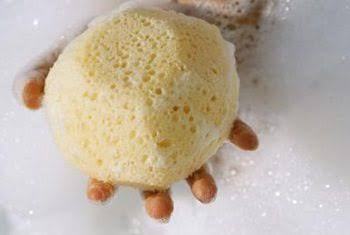Search This Blog
Curio facts is an original blogger website which is inspired to unveil the hidden, rare and bizarre phenomenon happening on our mother earth. Our mission is to disclose all the knowledge to you which you have never imagined and never thought could exist and to inspire learning by making it fun and easy. Rather than searching the rabbit hole of the internet. If you want to learn something mysterious, rare and unbelievable everyday then curio facts is the blog for you.
Featured
- Get link
- X
- Other Apps
Kitchen Sponge| How often you should change it| Curio Facts
How old is that sponge you're using to clean your dishes, to wipe down your counters and to sop up spilled messes
Boy, it truly is an all-purpose tool, isn't
it?
If you can't remember, it's probably time to
toss it and use a new one. That's because, according to the first comprehensive
study on the topic, your kitchen sponge is disgusting. And the only way to fix
that is by throwing it out and start with the fresh one
Can you smell what your sponge is cooking?
For a study published in the Nature journal
Scientific Reports, researchers led by Markus Egert of Furtwangen University in
Germany sequenced the microbial DNA in 14 used kitchen sponges to figure out
exactly what kind of bacterial situation they had on their hands. They also
tagged breeding microbes with fluorescent markers so they could watch them
using special imaging techniques.
They hit the motherlode: Out of more than
223,000 DNA sequences, the sponges came back with 362 different types of
bacteria. In fact, they found that a single cubic centimeter could be packed
with more than 5x10 raise power 10 bacteria.
Most of the bacteria weren't harmful. The samples were dominated by the bacteria Moraxellaceae, which is found all over human skin and kitchens. It's responsible for the sour smell of laundry
But some of the bacteria were harmful. Five
of the 10 bacteria most commonly found in the sponges were potential pathogens.
Even worse, those nastier bacteria were found in higher percentages in sponges
that had been regularly sanitized. That makes sense when you think about it: If
popping a sponge in the dishwasher or microwave kills 99 percent of the
bacteria festering within it, that remaining 1 percent is by definition the
toughest bacteria on the sponge — and now it's free to take over.
So now that you're thoroughly grossed out
by that moist little rectangle moldering by the sink, what do you do about it?
The obvious but the difficult option is to
stop using sponges altogether.
We suggest a regular replacement of kitchen
sponges. For example, on a weekly basis. Next time you find yourself giving a
sponge the sniff test, remember the old adage: When in doubt, throw it out
- Get link
- X
- Other Apps
Popular Posts
Deforestation| Deforestation in Pakistan| Curio Facts
- Get link
- X
- Other Apps
Appendix| A doctor had to remove his own appendix| Curio Facts
- Get link
- X
- Other Apps



Comments
Post a Comment
Please do not enter any spam comment.